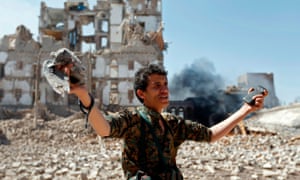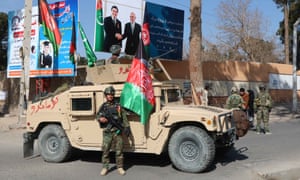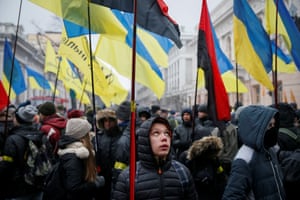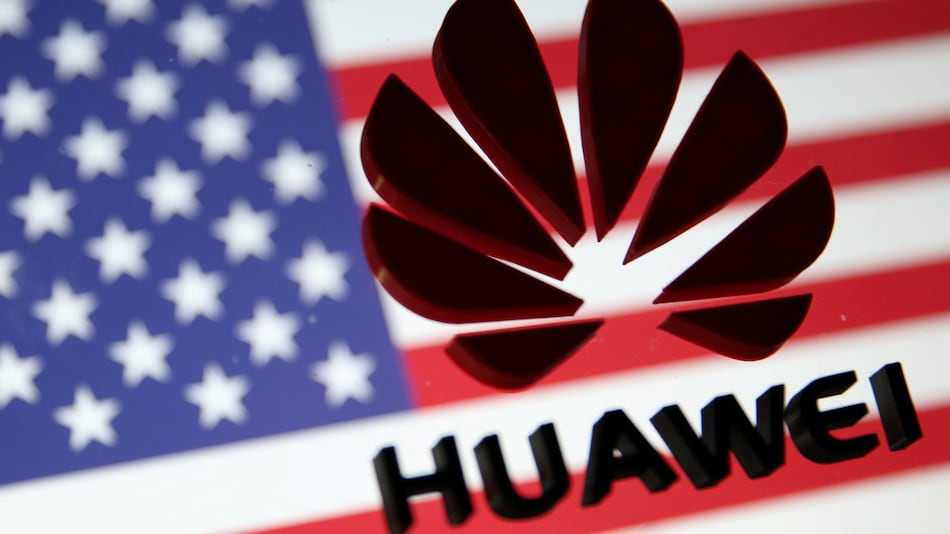
We live in a world of trouble. Conflicts today may be much less lethal than those that scarred the last century, but this brings little comfort. We remain deeply anxious. We can blame terrorism and the fear it inspires despite the statistically unimportant number of casualties it inflicts, or the contemporary media and the breathless cycle of “breaking news”, but the truth remains that the wars that seem to inspire the fanatics or have produced so many headlines in recent years prompt deep anxiety. One reason is that these wars appear to have no end in sight.
To explain these conflicts we reach for easy binary schema – Islam v the west; haves against have-nots; nations that “play by the rules” of the international system against “rogues”. We also look to grand geopolitical theories – the end of the Westphalian system, the west faced by “the rise of the rest” – or even just attribute the violence to “geography”. None of these explanations seems to adequately allay our concerns.
This week Mohammad bin Salman, the young Saudi Arabian crown prince, will be in London. One topic he will be discussing with British policymakers is the war raging since 2015 in its neighbour Yemen, where Saudi forces lead an alliance of regional powers against Houthi rebels. The war, part of a Saudi policy of adopting a more aggressive external posture, is not going well. It is a stalemate which has left thousands of civilians dead.
Last week Ashraf Ghani, Afghanistan’s embattled president, announced a bold plan to draw the Taliban into a binding peace process. Commentators spoke of a last desperate gamble to bring an end to conflict that has gone on so long that there are western soldiers soon to be deployed to the country who were in nappies when it started in 2001.
In Syria, where the civil war is now in its seventh year, there is no respite either. Ghouta, a rebel-held suburb of Damascus, is under daily bombardment after years of siege. Militia manoeuvre for advantage across the country. If anyone thought the fall of Raqqa, the headquarters of Islamic State (Isis), would bring an end to hostilities, they were sadly mistaken.
Nor are these “long wars” – which could include Somalia (at war since 1991) or Libya (since 2011) or Mali (since 2012) – restricted to the Islamic world. There is South Sudan, where a vicious four-year-old civil war is intensifying, and the Democratic Republic of the Congo, where more protests ended in bloodshed last week. The east of the DRC was the crucible of a huge conflict that killed 5 million people between 1997 and 2003 and has remained unstable ever since. Thousands have died and millions have been displaced by conflict there in the last 18 months as anarchy overcomes swaths of the vast country.
It is more than four years since Russia annexed Crimea and helped to foment a rebellion in Ukraine’s industrial east. Since then about 10,000 people have died, including 3,000 civilians, and more than 1.7 million been displaced. Despite a ceasefire deal, a low-intensity conflict has become the grinding everyday backdrop for a region that no longer sees a way out of its misery.
To understand the duration of these conflicts we need to understand their nature. Most analysis focuses on states. This is inevitable. Our maps show the world divided into nations. These are the building blocks of our political, legal, social and economic systems and, as has become so obvious in recent years, key to our identity. In Afghanistan, the war is both to establish a state, and about differing visions of what form it should take. In Syria, the war is to maintain, or overthrow, a state. In Yemen, the war is to control one. In the DRC, the conflict’s roots lie in the weakness of the state.
States have also prolonged these conflicts and, in some cases, caused them. Russia’s irredentist ambitions in Ukraine, Pakistan’s interference in Afghanistan. The involvement of so many regional and international actors in Syria fuelling, whether deliberately or accidentally, violence.
Yet, however important, states are far from the only protagonists in these conflicts. In two decades of covering dozens of conflicts around the world, I have reported on just two that involved the troops of two nations in direct confrontation. One was the short war between India and Pakistan in 1999; the second was the war in Iraq in 2003. According to researchers at the University of California, there are none more recent.
The front lines in these new conflicts often follow boundaries that divide clans or castes, not countries. They lie along frontiers between ethnic or sectarian communities, even those dividing, for example, pastoralists from herders or the landed from the landless, from those who speak one dialect or language from neighbours who speak another. These frontlines are not difficult to trace, on the map or on the ground.
In fact, if we look around the world at all its many conflicts, and if we define these wars more broadly, then we see frontlines everywhere, each with its own no man’s land strewn with casualties. In Mexico, Brazil, South Africa or the Philippines, there is huge violence associated with criminality and the efforts (by states) to stamp it out. There is violence perpetrated against women by those who fear progress in the struggle for a more equitable distribution of power, status and wealth. There is economic violence – how else to describe the deaths of 1,000 people in a building collapse in Bangladesh in 2013 or, in DRC again, the injuries to miners digging out critical commodities to the world’s industries?
Our world may not be racked by conventional conflicts between nation states of previous ages, but it is still a very violent place. The harsh reality may be that we should not be wondering why wars seem so intractable today, but why our time on this planet creates such intractable wars.
Syria

The conflict in Syria will soon enter its eighth year and, though the fighting that once consumed much of the country has now been restricted to a much smaller area, the chance of real peace still looks very distant. The best that anyone can hope for is a slow evolution towards a precarious pause punctuated by bouts of appalling brutality as the regime of Bashar al-Assad, bolstered by support from Moscow and Tehran, makes efforts to reassert its authority over the shattered country.
What such efforts involve has become clear recently. In the last few weeks, air strikes by Syrian planes have killed more than 600 civilians in Ghouta, a suburb of Damascus held by the opposition since 2013.
Although Isis has now been forced from almost all of its territory in Syria, other hardline Islamist groups remain very active, including one powerful organisation linked to al-Qaida. Armed opposition groups continue to receive logistical support and funding from the United States, Turkey and several Gulf countries. A Kurdish group has seized a swath of territory in the north-east. Successive efforts at peace negotiations have all failed.
Why has the war lasted so long? The Syrian war has always been immensely complex, fought out along national, sectarian, ideological and ethnic divides. This alone would have guaranteed a lengthy conflict, even without the involvement of regional and international actors. The UN has been marginalised by power politics. The US has stood back. The result has been massive suffering and a broken country which, even if peace can be achieved, will need up to a trillion dollars to reconstruct itself. The toxic effects of the conflict have been felt across the world.
Yemen

The chaos, and resulting war, in Yemen is now in its seventh year. The immediate roots of the current conflict lie in the aftermath of an Arab spring-inspired uprising in Yemen, the Arab region’s poorest country, that forced its veteran leader, Ali Abdullah Saleh, to step down in favour of his deputy Abdrabbuh Mansour Hadi in 2011.
But other causes lie deeper.
Yemen, once a British colony, has never been stable, and was only united after brutal conflicts in the 1990s. For more than a decade before the crisis of 2011, corruption, unemployment, food shortages, a powerful tribal system, entrenched separatism in the south, and the involvement of regional powers had combined to maintain high levels of instability.
Jihadi fighters had long been a force in Yemen, developing into a powerful local al-Qaida affiliate. A popular backlash against US counter-terrorism operations, which included drone strikes, and overspill of militants from Saudi Arabia exacerbated a complicated situation. This meant President Hadi was faced by huge challenges on taking power.
Chief among them was insurgency led by the Houthis, a minority Shia rebel group based in the north of Yemen with a long history of rebellion against the Sunni-dominated government.
The insurgents seized Yemen’s capital, Sana’a, in January 2015, forcing Hadi and his government to resign. This prompted regional involvement which has led to a humanitarian crisis putting millions at risk of starvation. A coalition of Gulf states led by Saudi Arabia – which received US, British and European logistical and intelligence support – launched air strikes against the Houthis. It has also blockaded Yemen to stop Iran smuggling weapons to the rebels. Tehran denies the charge.
Why has the war lasted so long? Fiendishly complicated tribal and sectarian dynamics ensure that no single faction is strong enough to win, while external involvement ensures all can stay in the fight. The conflict has drawn in more than a dozen countries and is linked to broader regional contests for power. A federal deal might bring peace but seems unlikely right now.
Democratic Republic of Congo

Should the Democratic Republic of the Congo slide back into the kind of conflict seen in the vast state between 1997 and 2003, it is likely that the intervening years of very relative calm will be forgotten. The six-year war, that started more than 20 years ago, was prompted by the fall of President Mobutu Sese Seko and exacerbated by the involvement of all regional powers, many attracted simply by the opportunity to loot the country’s mineral and metal resources. These still remain a draw, even if there is no current appetite among its neighbours to risk the sort of chaos that led to the deaths of more than 5 million people.
Yet the signs of deterioration are there: a weak central authority under President Joseph Kabila, who has outstayed his mandate by 15 months; crumbling law and order in places where there was never much government control; a growing conflict between warlords and ethnic communities; a fractured opposition; a distracted international community; and huge humanitarian need.
Will the war restart? The killing and the dying has started already, with a violent rebel movement in the Kasai region prompting a brutal government response that has led to mass displacement. Cholera and other diseases surge through vulnerable populations. The United Nations deployment in the DRC suffers increasing attacks, with the deaths of 14 peacekeepers in December, the worst single loss suffered by the organisation since 1993.
Elections are due to be held in December, though many doubt they will take place. The polls are a chance to arrest the slide of one of Africa’s most important states back into even greater poverty and conflict. Few are optimistic.
Afghanistan

Afghanistan has not known peace since the mid-1970s. The current conflict, which pits the Taliban and other Islamist extremists against the government in Kabul, started in 2001 with the US-led invasion that followed the 9/11 attacks. The US has supported, first President Hamid Karzai and then his successor, Ashraf Ghani, with huge amounts of military and other aid. More than 2,000 US soldiers have died, 10 times as many Afghan soldiers, and at least 30,000 civilians. Yet the Taliban today is active in more than two-thirds of Afghanistan’s administrative districts, though it controls fewer than one in 20. In 2015, the movement temporarily seized northern the city of Kunduz.
Why has the war lasted so long? One reason is strategic mistakes made by the US and allies in the immediate years after the 2001 invasion. The effort in Afghanistan was poorly resourced and misdirected. Missed early opportunities to construct a stable political settlement and score relatively easy military victories proved expensive.
Another key factor is the involvement of regional powers, primarily Pakistan. Islamabad sees having a friendly government in Kabul as critical to its strategic security and has backed the Taliban as a proxy, providing logistic aid and a safe haven to leaders.
But there are other reasons. Almost all areas where support for the Taliban is high are dominated by the Pashtun ethnic group, especially those controlled by certain tribes. Opium-growing zones are also prominent. It is striking how closely the map of Taliban influence today mirrors that of 20 years ago, when the movement surged to power. Then, as now, Afghanistan’s reputation as the “graveyard of empires” rests on solid, if fractured, ground.
Ukraine

In February, it was four years since Russia’s president, Vladimir Putin, annexed Crimea and helped foment a rebellion in the industrial east of Ukraine, “a former ‘Soviet republic” independent since 1991 that lies on one of the greatest cultural and linguistic fracture lines in the world today.
Thousands – fighters and civilians –have died. Late last year, aid agencies warned that 4.4 million people have been directly affected by the continuing hostilities, while 3.8 million need urgent assistance.
The war’s roots lie in 2013, when tens of thousands protested in Kiev and elsewhere, accusing the then government of backtracking on plans to sign a EU trade deal following pressure from the Kremlin. The government used violence against protesters, who ousted President Viktor Yanukovych the following year. This led to unrest in Russophone areas in east and south Ukraine. Fighting between government forces and Russia-backed separatists continued into 2015, with Moscow denying Kiev’s claims that it was sending troops and heavy weapons to the region.
The “Minsk agreement” stipulated a ceasefire and a special constitutional status for the rebel-held territories of the Donbass region, which would reintegrate into Ukraine and hold elections. None of that has come into effect and the number of ceasefire violations runs into the thousands. More than 100 Ukrainian soldiers were killed in the Donbass region last year, according to official figures. A squalid but deadly conflict has ground on since on the very borders of Europe, receiving ever less attention from the international community.
Why has the war lasted so long? Moscow has little intention of abandoning hard-won gains, despite pressure from economics sanctions. Europe and the US do not want to risk a confrontation. Sentiments within the Ukraine are as polarised as ever. Dubbed an “invisible” or “frozen” conflict, there is little sign of any shift that might break the deadlock.
Since you’re here …
… we have a small favour to ask. More people are reading the Guardian than ever but advertising revenues across the media are falling fast. And unlike many news organisations, we haven’t put up a paywall – we want to keep our journalism as open as we can. So you can see why we need to ask for your help. The Guardian’s independent, investigative journalism takes a lot of time, money and hard work to produce. But we do it because we believe our perspective matters – because it might well be your perspective, too.
Although Isis has now been forced from almost all of its territory in Syria, other hardline Islamist groups remain very active, including one powerful organisation linked to al-Qaida. Armed opposition groups continue to receive logistical support and funding from the United States, Turkey and several Gulf countries. A Kurdish group has seized a swath of territory in the north-east. Successive efforts at peace negotiations have all failed.
Why has the war lasted so long? The Syrian war has always been immensely complex, fought out along national, sectarian, ideological and ethnic divides. This alone would have guaranteed a lengthy conflict, even without the involvement of regional and international actors. The UN has been marginalised by power politics. The US has stood back. The result has been massive suffering and a broken country which, even if peace can be achieved, will need up to a trillion dollars to reconstruct itself. The toxic effects of the conflict have been felt across the world.
Yemen

The chaos, and resulting war, in Yemen is now in its seventh year. The immediate roots of the current conflict lie in the aftermath of an Arab spring-inspired uprising in Yemen, the Arab region’s poorest country, that forced its veteran leader, Ali Abdullah Saleh, to step down in favour of his deputy Abdrabbuh Mansour Hadi in 2011.
But other causes lie deeper.
Yemen, once a British colony, has never been stable, and was only united after brutal conflicts in the 1990s. For more than a decade before the crisis of 2011, corruption, unemployment, food shortages, a powerful tribal system, entrenched separatism in the south, and the involvement of regional powers had combined to maintain high levels of instability.
Jihadi fighters had long been a force in Yemen, developing into a powerful local al-Qaida affiliate. A popular backlash against US counter-terrorism operations, which included drone strikes, and overspill of militants from Saudi Arabia exacerbated a complicated situation. This meant President Hadi was faced by huge challenges on taking power.
Chief among them was insurgency led by the Houthis, a minority Shia rebel group based in the north of Yemen with a long history of rebellion against the Sunni-dominated government.
The insurgents seized Yemen’s capital, Sana’a, in January 2015, forcing Hadi and his government to resign. This prompted regional involvement which has led to a humanitarian crisis putting millions at risk of starvation. A coalition of Gulf states led by Saudi Arabia – which received US, British and European logistical and intelligence support – launched air strikes against the Houthis. It has also blockaded Yemen to stop Iran smuggling weapons to the rebels. Tehran denies the charge.
Why has the war lasted so long? Fiendishly complicated tribal and sectarian dynamics ensure that no single faction is strong enough to win, while external involvement ensures all can stay in the fight. The conflict has drawn in more than a dozen countries and is linked to broader regional contests for power. A federal deal might bring peace but seems unlikely right now.
Democratic Republic of Congo

Should the Democratic Republic of the Congo slide back into the kind of conflict seen in the vast state between 1997 and 2003, it is likely that the intervening years of very relative calm will be forgotten. The six-year war, that started more than 20 years ago, was prompted by the fall of President Mobutu Sese Seko and exacerbated by the involvement of all regional powers, many attracted simply by the opportunity to loot the country’s mineral and metal resources. These still remain a draw, even if there is no current appetite among its neighbours to risk the sort of chaos that led to the deaths of more than 5 million people.
Yet the signs of deterioration are there: a weak central authority under President Joseph Kabila, who has outstayed his mandate by 15 months; crumbling law and order in places where there was never much government control; a growing conflict between warlords and ethnic communities; a fractured opposition; a distracted international community; and huge humanitarian need.
Will the war restart? The killing and the dying has started already, with a violent rebel movement in the Kasai region prompting a brutal government response that has led to mass displacement. Cholera and other diseases surge through vulnerable populations. The United Nations deployment in the DRC suffers increasing attacks, with the deaths of 14 peacekeepers in December, the worst single loss suffered by the organisation since 1993.
Elections are due to be held in December, though many doubt they will take place. The polls are a chance to arrest the slide of one of Africa’s most important states back into even greater poverty and conflict. Few are optimistic.
Afghanistan

Afghanistan has not known peace since the mid-1970s. The current conflict, which pits the Taliban and other Islamist extremists against the government in Kabul, started in 2001 with the US-led invasion that followed the 9/11 attacks. The US has supported, first President Hamid Karzai and then his successor, Ashraf Ghani, with huge amounts of military and other aid. More than 2,000 US soldiers have died, 10 times as many Afghan soldiers, and at least 30,000 civilians. Yet the Taliban today is active in more than two-thirds of Afghanistan’s administrative districts, though it controls fewer than one in 20. In 2015, the movement temporarily seized northern the city of Kunduz.
Why has the war lasted so long? One reason is strategic mistakes made by the US and allies in the immediate years after the 2001 invasion. The effort in Afghanistan was poorly resourced and misdirected. Missed early opportunities to construct a stable political settlement and score relatively easy military victories proved expensive.
Another key factor is the involvement of regional powers, primarily Pakistan. Islamabad sees having a friendly government in Kabul as critical to its strategic security and has backed the Taliban as a proxy, providing logistic aid and a safe haven to leaders.
But there are other reasons. Almost all areas where support for the Taliban is high are dominated by the Pashtun ethnic group, especially those controlled by certain tribes. Opium-growing zones are also prominent. It is striking how closely the map of Taliban influence today mirrors that of 20 years ago, when the movement surged to power. Then, as now, Afghanistan’s reputation as the “graveyard of empires” rests on solid, if fractured, ground.
Ukraine

In February, it was four years since Russia’s president, Vladimir Putin, annexed Crimea and helped foment a rebellion in the industrial east of Ukraine, “a former ‘Soviet republic” independent since 1991 that lies on one of the greatest cultural and linguistic fracture lines in the world today
Thousands – fighters and civilians –have died. Late last year, aid agencies warned that 4.4 million people have been directly affected by the continuing hostilities, while 3.8 million need urgent assistance.
The war’s roots lie in 2013, when tens of thousands protested in Kiev and elsewhere, accusing the then government of backtracking on plans to sign a EU trade deal following pressure from the Kremlin. The government used violence against protesters, who ousted President Viktor Yanukovych the following year. This led to unrest in Russophone areas in east and south Ukraine. Fighting between government forces and Russia-backed separatists continued into 2015, with Moscow denying Kiev’s claims that it was sending troops and heavy weapons to the region.
The “Minsk agreement” stipulated a ceasefire and a special constitutional status for the rebel-held territories of the Donbass region, which would reintegrate into Ukraine and hold elections. None of that has come into effect and the number of ceasefire violations runs into the thousands. More than 100 Ukrainian soldiers were killed in the Donbass region last year, according to official figures. A squalid but deadly conflict has ground on since on the very borders of Europe, receiving ever less attention from the international community.
Why has the war lasted so long? Moscow has little intention of abandoning hard-won gains, despite pressure from economics sanctions. Europe and the US do not want to risk a confrontation. Sentiments within the Ukraine are as polarised as ever. Dubbed an “invisible” or “frozen” conflict, there is little sign of any shift that might break the deadlock.
we have a small favour to ask. More people are reading the Guardian than ever but advertising revenues across the media are falling fast. And unlike many news organisations, we haven’t put up a paywall – we want to keep our journalism as open as we can. So you can see why we need to ask for your help. The Guardian’s independent, investigative journalism takes a lot of time, money and hard work to produce. But we do it because we believe our perspective matters – because it might well be your perspective, too.we have a small favour to ask. More people are reading the Guardian than ever but advertising revenues across the media are falling fast. And unlike many news organisations, we haven’t put up a paywall – we want to keep our journalism as open as we can. So you can see why we need to ask for your help. The Guardian’s independent, investigative journalism takes a lot of time, money and hard work to produce. But we do it because we believe our perspective matters – because it might well be your perspective, too.



